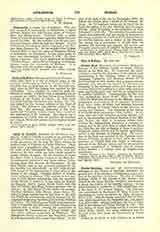

Citta di Castello, Diocese of (CIVITATIS CASTELLI).—Citta di Castello is a town in the province of Perugia, in Umbria, Central Italy, situated on a slope of the Apennines, not far from the Tiber, whence its ancient name of Tifernum or Civitas Tiberina. Pliny built there a magnificent villa. In 550, Fantalogus, by order of the Ostrogothic king, Totila, took and destroyed the city, which was later rebuilt around a castle, whence its name. By the donation of Pepin the Short (752), it became subject to the Holy See. In subsequent centuries it was under various rulers, among them Pier Saccone di Pietramala. In the later Middle Ages it was governed successively by the Guelphs and Ghibellines. In 1375 Citta di Castello joined in the insurrection of other cities of the States of the Church. Cardinal Robert of Geneva (later antipope as Clement VII), undertook to recapture it with Breton mercenaries, but was repulsed. Under Martin V, however, it was taken by Braccio da Montone (1420). Later, Nicola Vitelli, with the help of Florence and Milan, became absolute ruler or tzranno. In 1474 Sixtus IV sent thither his nephew, Cardinal Giuliano della Rovere (later Julius II). After fruitless negotiations he laid siege to the city, but Vitelli did not surrender until he learned that the command of the army had been given to Duke Federigo of Urbino. The following year Vitelli tried unsuccessfully to recapture the city; fear of Caesar Borgia alone induced him to desist. During the persecution of Diocletian St. Crescentianus, a Roman knight, and ten others suffered martyrdom at Tifernum. The first-known bishop of this see was Ennodius, present at a Roman council (465) under Pope Hilary. At the time of the sack of the city by Fantalogus (550), the bishop was Florius, later a friend of St. Gregory the Great. In 711 Lombard Arians put to death for the Faith the bishop of the city, Albertus, and his deacon Britius. Citta di Castello is the birthplace of Pope Celestine II (1143-44). The cathedral is a noble monument of architecture, and has among its treasures an altar-front (paliotto) of chiselled silver dating back to the twelfth century, and a crosier of the fifteenth. The diocese has a population of 50,250, with 158 parishes, 300 churches and chapels, 162 secular and 10 regular priests, and 12 religious houses of women.
U. BENIGNI

